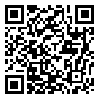

BibTeX | RIS | EndNote | Medlars | ProCite | Reference Manager | RefWorks
Send citation to:
URL: http://hcjournal.arums.ac.ir/article-1-28-en.html
ABSTRACT
Background: Trauma during delivery is including fecal and urinary incontinence, painful intercourse and Perineum pain. This study aimed to determine the effect of perineal massage on the pelvic floor disorders.
Methods: This quasi-experimental study was conducted among 125 primiparous singletons in active phase of labor at Shahid Akbar-Abadi Medical Center. Samples divided into two groups with random sampling including: intervention group (n=62) and control group�(n=63). Intervention group in addition to receiving care in active phase, received perineal massage with two fingers between abdominal contractions using lubricant, and control group received routine care. Data collection tool was a questionnaire, consisted of three parts: demographic information, first phase cares and obstetric complications. Mothers were visited at 10th day of labor and were followed three months later by telephone. Data were analyzed using descriptive and inferential statistics with spss, v.15.
Results: Before intervention, groups were similar in average age, gestational age, and estimated fetal weight. After intervention there were significant difference between groups in perineum health (p=0/0001) and perineal pain 3th (P=0/041) and 10th days after delivery (P =�0/0001).
Conclusion: Perineum massage reduces postpartum perineal pain and injury of vagina, and using massage in active phase of delivery is advised for prevention of delivery traumas.
Keywords: Perineal Massage, Pelvic Floor Disorders, Primiparous
| Rights and permissions | |
 |
This work is licensed under a Creative Commons Attribution-NonCommercial 4.0 International License. |


